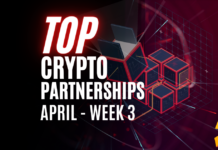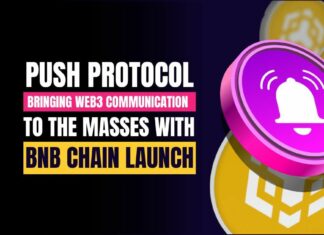Let me ask you a question. What does the Disney Accelerator program, Starbucks Coffee Company, Starbucks Odyssey, and Robinhood have in common? The answer is Polygon. All these big giants choose Polygon as their preferred blockchain.
Polygon is currently the King of the Ethereum Layer 2 solutions. It is currently hosting over 53,000 dApps and its weekly unique active users’ numbers have gone through the roof. But there are 6 super bullish polygon competitors that are giving Polygon some stiff competition. And for some of them, a free airdrop is about to happen anytime soon!
1) Immutable X (IMX)
Our first token is Immutable X, one of my long-time favorites. Just 3 months ago, we did a deep dive into this project. Immutable X’s focus is on NFTs. They are an L2 built on ETH.
They use ZK roll-up technology from Starkware. Aka zk-STARKs. These improve on the zk-SNARKS because they remove the need for a trusted setup. In turn, this allows for 9,000 NFT transfers, trades, or mints per second. Without any gas fees!
So, they are a power to reckon with in the NFT space. They overtook Polygon in NFT volume. You can also count on them in the metaverse and for gaming. Talking about gaming, they have a strong blockchain gaming roster. For example:
We're launching the @Immutable Developer & Venture Fund worth $500M to accelerate the adoption of Web3 games & projects.
Learn more ➡️ https://t.co/iUs5uYQsIq
Continue the thread below. 🧵 pic.twitter.com/u5rPPsApAt
— Immutable 🅧 – $IMX (@Immutable) June 17, 2022
They also have a large $500 million ecosystem fund. However, they are not active in other fields. On the other hand, they do have a strong team and some serious backers. For instance:
- Temasek (they more or less own Singapore)
- Animoca (Axies)
- Arrington.
- The price of the IXM token is currently at $0.5342.
- Market cap $304m
- Max token supply 2 billion
- In circulation, 570 million tokens = 25%
So, are you a fan of IMX? Let us know in the comments. Now it’s time to check out our next project, Arbitrum
2) Arbitrum
Arbitrum is also an L2 built on ETH. As such, they offer faster transactions and cheaper gas fees compared to ETH. Just like IMX, they take advantage of Ethereum’s security. They both use the Ethereum consensus mechanism. On the other hand, Polygon has its own Proof-of-Stake (PoS) consensus.
🎆 Introducing Arbitrum Nova 🎆
A new chain built on our AnyTrust technology that optimizes for ultra low-cost transactions, with strong security guarantees!
Mainnet is now open for developers to start building ahead of opening up to end users. 🛠https://t.co/xlZlyQ6kzQ
— Arbitrum (@arbitrum) July 11, 2022
However, Arbitrum uses an Optimistic Roll-up solution. In other words, they roll up batches of transactions and deposit these on Ethereum, their L1. This batch is a single transaction. Optimistic roll-ups use a dispute resolution process for settling transactions. This makes them computationally less complex.
Then, if we look at TVL, Polygon has $1.25 billion and is #5 of all chains. Polygon currently hosts 323 protocols. With TVL, Arbitrum directly follows at #6 with $978 million. 127 protocols call Arbitrum their home.
So, Arbitrum achieved all this without having its own token yet. The crypto space expects an Arbitrum token launch and airdrop to be imminent. About a month ago, we showed you how you can take part in this airdrop. Polygon launched in October 2017. Arbitrum launched in May 2021. I see lots of potential in this project. So, don’t be surprised if Arbitrum will keep making moves and keeps growing. It has all the potential to become a serious Polygon competitor.
We're extremely happy to see that @BinanceUS now supports deposits & withdrawals on Arbitrum One!
US fam, rejoice! 🇺🇸 https://t.co/BM68J1LgzA
— Arbitrum (@arbitrum) October 21, 2022
Let us know in the comments what you think of Arbitrum. And this leads us to the third project, Celer.
3) Celer
Celer Network is an L1 blockchain interoperability protocol. It also hosts an L2 solution, mostly for finance. They use zk-Starkware solutions. You may know the cBridge? This is another well-known product of theirs. They support well over 110 tokens and 30+ blockchains. Interoperability is their first, middle, and last name. The transaction volume is now well over $10 billion.
However, in August, the bridge got hacked during a DNS attack. Losses were around $240K, which is an unusually low amount for a bridge hack. On the other hand, Celer has strong ecosystem partners. Especially for the cBridge.
Also, Celer has a strong team that consists of PhDs. They also boast some strong investors. For example, Arrington and Binance Labs. For those interested in tokenomics, high-emission periods are already over. Then:
- The price of the CELR token is $0.0143.
- Market cap $80.7 million.
- Max token supply 10 billion
- Circulation supply of 5.6 billion tokens = 56%
🎉We are excited to announce that we are supporting the launch of @CetusProtocol, a DEX and concentrated liquidity protocol, on @AptosFoundation mainnet with 7 Celer-bridged tokens, including $ceUSDT and $ceUSDC! 🌈
🔁Try a quick swap yourself at: https://t.co/Sz2GkIJl3U pic.twitter.com/GEr4TAxJtV— CelerNetwork (@CelerNetwork) October 24, 2022
Are you a fan of Celer? Let us know in the comments. And this brings us to our 4th competitor, Loopring.
4) Loopring
Loopring is the first zk Roll up L2 on Ethereum. In the same L2 vein, they reduce gas fees and speed up transactions. Up to 100x lower fees compared to Ethereum. So, their main focus is on the DeFi space, more specifically DEXs. Polygon is more diverse with its attention to GameFi and NFTs, among others.
ICYMI📢
"Phase 2 [of L2 DeFi Port] will be introducing even greater functionality to Loopring L2 users, potentially including lending, margin trading, additional asset staking options, and much more!"💙
Read more from our latest Q3 update here👇https://t.co/gGWTYUKAlX
— Loopring💙🏴☠️ (@loopringorg) October 24, 2022
And just like IMX and Arbitrum, they ride the Ethereum consensus mechanism for safety. This makes them much more scalable compared to Polygon. So, if we compare the TVL, Polygon still has $1.25 billion and Loopring Exchange $109.83 million. Here are other indicators:
- The price of LRC is $0.2511.
- The marketcap is $312.6 million.
- The max token supply is 1.3 billion.
- The circulation supply is 1.2 billion = almost 100%
ICYMI✨@GameStopNFT is live on Loopring L2💙#NFT creators + collectors are no longer constrained by costly gas fees
Now anyone can trade and mint NFTs for a fraction of the cost without sacrificing on security
Read more👇https://t.co/R6uB4TVrrC
— Loopring💙🏴☠️ (@loopringorg) July 27, 2022
So, what do you think of Loopring as the L2 OG? Drop us a comment below. There are only two more to go, and next up is Starknet.
5) Starknet
StarkNet is an L2 built on top of Ethereum. However, they use zk roll-ups, instead of optimistic roll-ups. The zk-STARKs is their technology.
Immutable X and Celer also use this. Zk-STARKs allow you to share data with a third party. This can be for use or computation. However, you don’t reveal the data to this third party. This is one of the reasons why it is so popular.
Polygon moves towards using zk roll-ups. They also use the Polygon ZkEVM. But that’s not all, they are also developing Polygon Miden. This also uses ZK-STARK technology.
So, we see Polygon using the technology developed by one of its competitors. This is one of the reasons why I think StarkNet may well become a serious contender for a spot in the L2 limelight.
They both use a different coding language, though. Polygon uses Solidity. StarkNet has its own language, named CAIRO. Also, StarkNet currently doesn’t have a token yet. But, I expect an airdrop soon. In our recent crypto airdrop video, we have a StarkNet airdrop strategy for you.
Bringing Solidity to StarkNet at warp speed!
With the WARP transpiler, @nethermindeth was able to migrate Solidity written Uniswap v3 into Cairo codes.
UniStark is the result! 💪🏽
Join our spaces for real alpha!https://t.co/8hJnO1uhzm pic.twitter.com/z8xLbHXvo6
— StarkWare (@StarkWareLtd) October 22, 2022
What are your thoughts on StarkNet? Drop us a comment below. And this leads us to our last project for today, zkSync.
6) zkSync
zkSync is another L2 built on top of Ethereum. The way they want to reduce Ethereum congestion is by using zk roll-ups. Now, transactions should be faster. This is because they use ZK mathematical proofs for transaction verification. However, because of this, zkSync is less EVM-compatible.
4 days to zkSync 2.0 on mainnet. With just days left until our mainnet launch, we’re excited to see so many projects joining the zkEVM revolution by launching on our platform. Here are another five updates from our fast-growing ecosystem. #jointhemission
🧵(1/7) pic.twitter.com/1BMcVBr6Ey
— zkSync (@zksync) October 24, 2022
Both Polygon and zkSync are strong competitors in the EVM market. With zkSync 2.0, ZKSync hopes to bridge this EVM gap. I expect this to launch before the end of the year. Polygon’s zkEVM is due in early 2023 if they can meet that deadline at all. This may give zkSync and other EVM-compatible L2s an advantage.
zkSync has also no token yet. This means that I can’t give you any comparison on TVL and the like. However, it’s well worth keeping an eye out on zkSync. It’s another promising L2 solution.
Conclusion
This brings us to the end of comparing the Polygon competitors. Polygon is currently leading the L2 field. Big companies flock to them and everything seems to be going right for them. However, there’s always somebody else waiting in the side wings. Competition is stiff in the L2 space.
Let us know in the comments how you liked these 6 projects.
⬆️For more cryptocurrency news, check out the Altcoin Buzz YouTube channel.
⬆️ Check out our most up-to-date research, NFT and Metaverse buy, and how to protect your portfolio in this market by checking out our Altcoin Buzz Access group. And for a limited time, it’s totally FREE. Just click the link and Try it today.




























